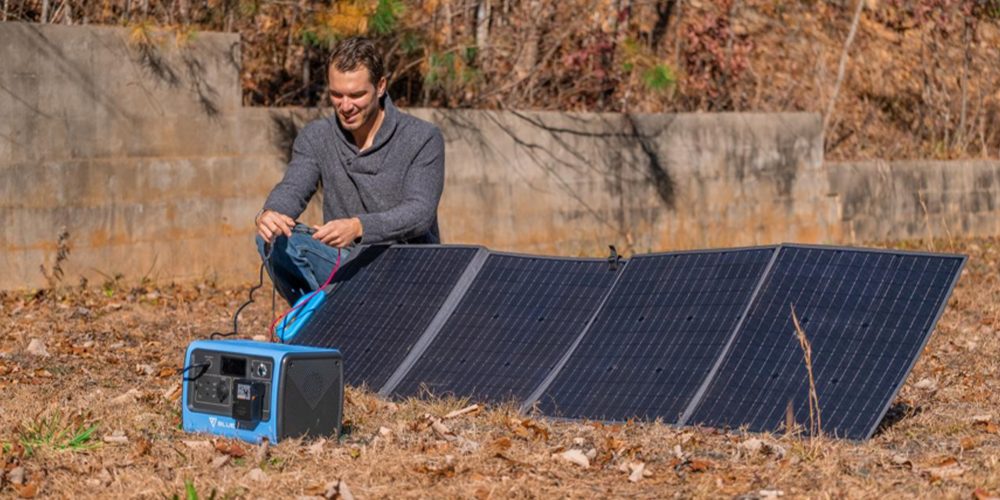Are you looking for a sustainable way to enjoy the outdoors, while also reducing your carbon footprint?
If so, a yurt powered by solar panels may be just what you need! Utilizing renewable energy not only helps protect our environment but can also prove to be an efficient and cost-effective form of power for your off-grid living.
In this article, we’ll look at how many solar panels it takes to safely power a yurt - giving you everything you need in order to make the most out of your outdoor adventures.
What is a Yurt?

A yurt is a traditional dwelling still used in Central Asia, popularised in subarctic regions due to its lightweight and durable ability.
It is made up of an exterior latticework wall supported by wooden poles, which make up the skeletal structure of the yurt.
A single covering of either felt or canvas acts as a temporary roof, making yurts easily transportable and quickly setup - perfect for nomadic inhabitants.
The yurt's central design enables it to remain strong during gusts of wind while at the same time also allowing light to pass through.
There is typically a central fire inside each yurt, around which most activities occur. This method of living has stood the test of time and still provides reliable shelter to this day.
How Much Electricity Does a Yurt Use?
The amount of energy a yurt uses can vary depending on various factors, such as the yurt's location, size, insulation, heating and cooling system, as well as the number of occupants and their energy use habits.
A well-insulated yurt with efficient heating and cooling systems can use significantly less energy than a poorly insulated yurt with inefficient heating and cooling.
Generally, off-grid yurts use renewable energy sources like solar or wind to generate electricity and rely on propane or wood for heating and cooking.
Providing a specific energy usage estimate for a yurt without additional information is challenging. Just like homes, energy usage varies tremendously from home to home.
However, for the purpose of this article let's assume that the average yurt uses 5 kWh of electricity per day.
How Many Solar Panels Do You Need To Power A Yurt?

The number of solar panels needed to power a yurt depends on several factors, such as the location of the yurt, the energy usage of the occupants, the climate, and the efficiency of the solar panels.
To determine the number of solar panels needed, it's important to first calculate the daily energy consumption of the yurt and then choose the appropriate solar panel size and number to meet that demand.
Additionally, a battery bank is typically required to store excess energy generated by the solar panels for use when the sun is not shining.
The easiest formula you can use to determine the number of solar panels needed is the following:

We already know that our yurt uses 5 kWh every day. That total roughly 150 kWh per month.
As for the monthly peak sun hours, well, our yurt is located in California, where we receive about 4.7 peak sun hours per day, which totals 141 peak sun hours a month.
Now, let's use the formula:
150 / 141 x 1000 = 1063 watts
Thats the total amount of power we need to meet our energy demands.
To figure out how many panels you need, simply divide your total wattage by the power rating of your chosen solar panels.
We will use 400 watt panels.
1063 / 400 = 2,6 panels. Let's make that 3 panels to meet our energy demands.
If you want to learn more about this, check the article " Off Grid Solar System-Solar Panels and Battery for Home".
Should I use ground-mounted solar panels?

Whether you install ground-mounted or roof-mounted solar panels depends on various factors, including the size of the solar system, the available space, the orientation of the building, and the specific needs and preferences of the property owner.
Both ground-mounted and roof-mounted solar panels have their advantages and disadvantages.
Ground-mounted solar panels are often more expensive to install than roof-mounted panels, but they offer several benefits.
Ground-mounted solar panels can be installed in an optimal location to receive maximum sun exposure and can be tilted to optimize the angle of the panels.
They are also easier to access for cleaning and maintenance, and their installation can be less invasive than roof-mounted panels.
Roof-mounted solar panels are typically less expensive to install than ground-mounted panels, as they don't require additional equipment or infrastructure.
They are also more space-efficient, especially in urban or suburban areas where space is limited.
Additionally, roof-mounted panels can provide shading and insulation for the building below, potentially reducing energy costs further.
Ultimately, the best choice between ground-mounted and roof-mounted solar panels depends on the property's specific circumstances and the property owner's goals.
In our case, roof-mounted solar panels are actually not an option, as our yurt does not allow for this. Therefore, ground-mounted solar panels are the optimal choice.
Final Thoughts
In conclusion, the number of solar panels needed for a yurt will depend on the individual’s power needs and budget.
If you want to keep things simple, it might be worthwhile to start with a smaller setup and increase as needed - adding more panels if your power needs call for it.
Overall, powering a yurt with solar is not as hard as one may think. With careful planning, research, and execution - you can have your off-grid yurt powered completely by the sun in no time!
Remember that many eco-conscious communities offer support groups where you can get advice and even discounts on some of the key items needed to set up your own solar-powered yurt.
We recommend checking out some of our portable solar panel options to get started.







































































